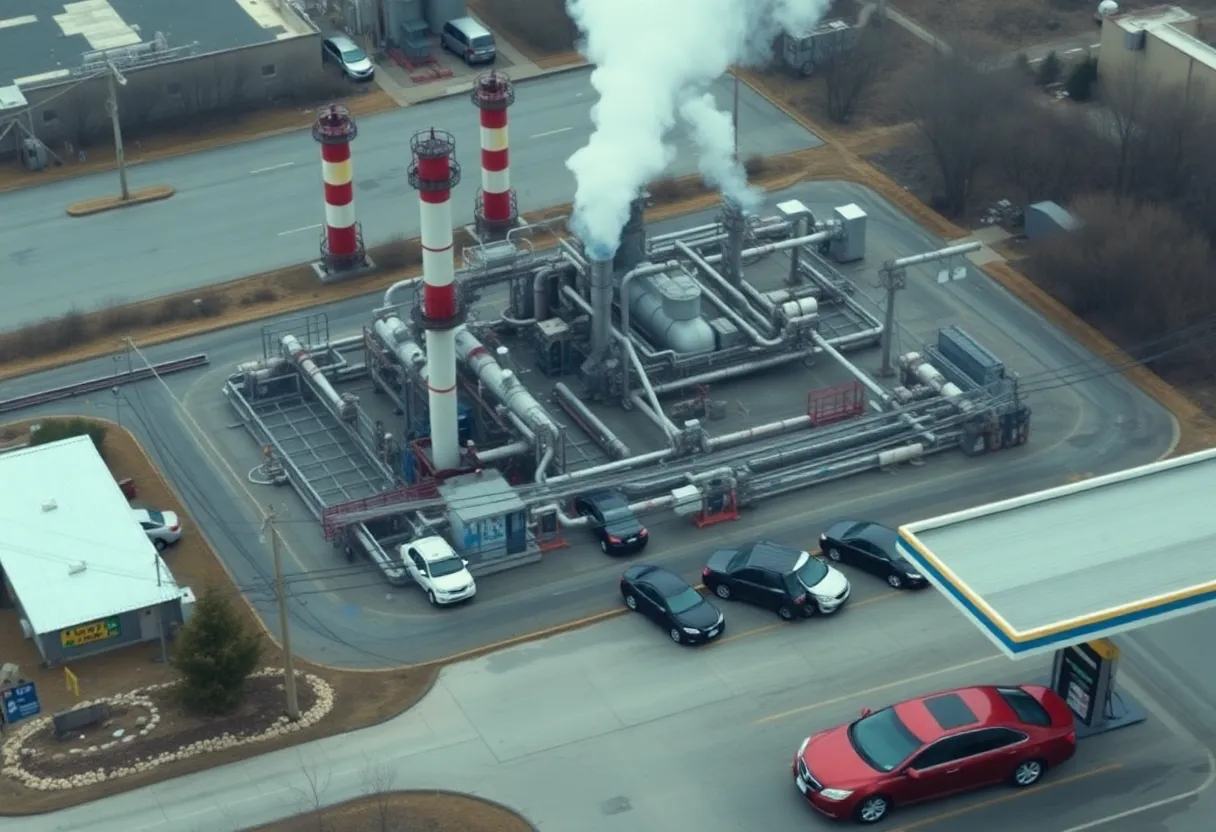News Summary
California is confronting a potential gas crisis as two major oil refineries, Valero Benicia and Phillips 66, announce plans to shut down. These closures could reduce the state’s gas supply by 20% and lead to a significant spike in prices. Current gas prices are already nearing $5 per gallon, with forecasts suggesting they could exceed $8 within a year due to the loss of nearly 18% of the state’s crude oil capacity. Governor Gavin Newsom is urging cooperation from refiners to maintain stability in gas supply for Californians.
California lawmakers are expressing deep concerns as two major oil refineries announce their plans to close, potentially triggering a significant gas crisis in the state. The Valero Benicia Refinery, located in the Bay Area, is scheduled to shut down in April 2026, while the Phillips 66 refinery in Southern California is expected to cease operations within the next year. These closures could contribute to a dramatic 20% reduction in California’s gas supply.
As of now, existing gas prices in areas like Walnut Creek hover just below $5 per gallon, with some individuals reporting costs exceeding $100 to fill their tanks. This alarming trend has prompted various state officials to raise questions regarding the rationale behind these refinery shutdowns, especially in light of the substantial profits reported by these establishments. The convergence of refinery closures and rising gas prices has led to widespread apprehension about future economic impacts.
Potential Price Increases
Experts warn that if the refinery closures go as planned, California gas prices could see an abrupt and significant spike. A forecast from the University of Southern California projects that prices could surge by 75%, potentially exceeding $8 per gallon by next year. This stark prediction has raised alarm among not just state lawmakers, but also consumers facing escalating fuel costs.
Impact on State’s Gas Supply
The potential closures of Valero and Phillips 66 refineries are particularly concerning as they represent nearly 18% of California’s crude oil capacity. With gas consumption slowly declining in the state, there are fears that the reduction in refinery capacity may outpace this decrease in demand, exacerbating the state’s supply issues.
Regulatory Environment and Oil Imports
California’s stringent regulations on oil companies contribute to the challenges facing the industry. According to Valero’s CEO, the state’s regulatory environment ranks among the most stringent in North America. This, combined with the fact that California imports approximately 63.5% of its oil supply as of 2024, places further strain on local operations and pricing stability.
Factors Contributing to Rising Prices
Although some predict that temporary price relief could occur during the summer driving season, longer-term forecasts remain grim. Consulting firms attribute rising fuel prices primarily to the interplay of supply and demand coupled with recent refinery closures. Given these economic dynamics, consumers may need to prepare for sustained high prices at the pump.
Government Response and Future Plans
The state’s Governor, Gavin Newsom, has made it clear that he aims to phase out gas-powered cars by 2035 in an effort to reduce emissions and promote cleaner energy sources. However, political factors at the federal level complicate these ambitions. In response to the recent refinery announcements and concerns about gas pricing, Governor Newsom has urged refiners to work cooperatively with the state government to ensure a more stable gas supply for all Californians.
In light of these developments, Governor Newsom’s administration has enacted legislation designed to monitor gas prices and prevent price gouging practices, seeking to protect consumers from the financial burdens created by fluctuating fuel costs. Nonetheless, the broader market conditions prompted by refinery closures and regulatory challenges linger, raising questions about the immediate and long-term future of gas prices in California.
As the situation evolves, the implications for both consumers and policymakers remain significant. With critical decisions ahead regarding refinery operations and resource management, stakeholders across the state will need to closely monitor developments in the oil industry to navigate the impending gas crisis most effectively.
Deeper Dive: News & Info About This Topic
- KRON4: Gas Prices Could Soar With Refineries Closing in California
- Wikipedia: Gasoline
- CBS News: California Gas Prices Could Surge With More Oil Refineries Closing
- Google Search: California gas prices
- Mercury News: Will California’s High Gas Prices Go Even Higher?
- Encyclopedia Britannica: Oil Refinery
- KTLA: Newsom’s Office Pushes Back on Report Claiming 75% Spike in California Gas Prices by 2026
- Google News: Impact of Refinery Closures on Gas Prices
- Newsweek: California Gas Prices – Brian Jones
- Google Scholar: California Oil Refinery Closures
- The Hill: California Fuel Refinery Closures and Gas Prices

Author: STAFF HERE COSTA MESA WRITER
The COSTA MESA STAFF WRITER represents the experienced team at HERECostaMesa.com, your go-to source for actionable local news and information in Costa Mesa, Orange County, and beyond. Specializing in "news you can use," we cover essential topics like product reviews for personal and business needs, local business directories, politics, real estate trends, neighborhood insights, and state news affecting the area—with deep expertise drawn from years of dedicated reporting and strong community input, including local press releases and business updates. We deliver top reporting on high-value events such as the OC Fair, Concerts in the Park, and Fish Fry. Our coverage extends to key organizations like the Costa Mesa Chamber of Commerce and Boys & Girls Clubs of Central Orange Coast, plus leading businesses in retail, fashion, and technology that power the local economy such as Vans, Experian, and South Coast Plaza. As part of the broader HERE network, including HEREAnaheim.com, HEREBeverlyHills.com, HERECoronado.com, HEREHollywood.com, HEREHuntingtonBeach.com, HERELongBeach.com, HERELosAngeles.com, HEREMissionViejo.com, HERESanDiego.com, and HERESantaAna.com, we provide comprehensive, credible insights into California's dynamic landscape.





